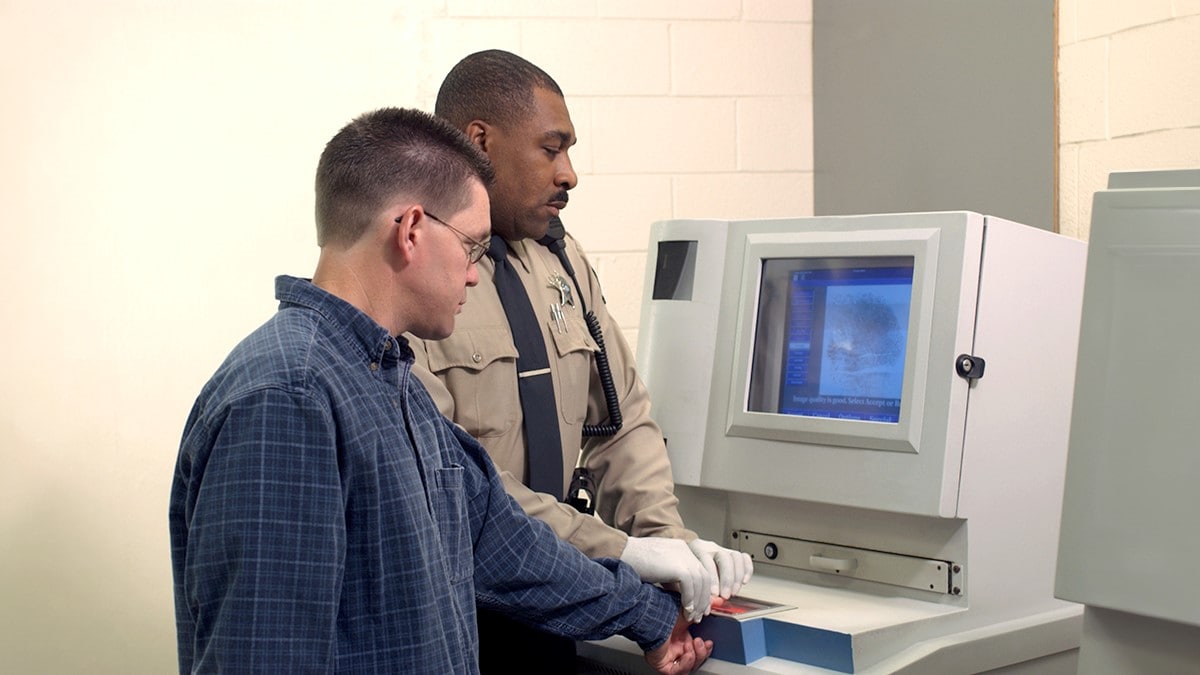Key points
- Correctional workers are responsible for the care of people who are incarcerated or detained.
- Correctional workers maintain the security of correctional facilities.
- Research shows that correctional workers have high rates of injuries and illnesses.

Who are correctional officers?
Correctional workers may include:
- correctional officers,
- chaplains,
- healthcare providers,
- teachers,
- vocational instructors,
- drug treatment specialists,
- food service personnel,
- maintenance personnel,
- administrative personnel,
- case managers, and
- correctional counselors.
Approximately 363,250 correctional officers and jailers work inside correctional facilities in the United States.1 This estimate does not include other correctional workers (listed above).
Correctional workers are responsible for providing supervision, care, and correctional treatment of incarcerated or detained persons. They maintain security by enforcing facility rules and regulations.

Risks
Research shows that correctional workers have high rates of injuries and illnesses such as stress, burnout, and mental health-related consequences2.
Correctional workers face many different workplace hazards, including:
- Workplace violence (assaults)
- Strains
- Slips, trips, and falls, or other injuries such as when responding to emergencies
- Occupational needlestick or sharps injuries
- Motor vehicle-related injuries
- Exposure to illicit drugs
- Exposure to infectious diseases (e.g., HIV, Hepatitis, TB)
- Respiratory exposures (e.g., TB)
- Long and irregular hours, including unusual shifts

Programs and initiatives
NIOSH conducts research to protect the safety and health of correctional workers.
The purpose of this research is to:
- provide insight into the effectiveness of current practices.
- identify the barriers and risks correctional workers still face.
- inform the development of policies and interventions.
The Emergency Preparedness and Response Program (EPR) works to improve the safety and health of public safety workers.
The Public Safety Program does research to reduce or eliminate work-related injury, illness, and death among public safety workers.
The National Occupational Research Agenda (NORA) Public Safety Sector Council is a group of individuals and organizations. They share an interest in improving safety and health of public safety workers through partnerships and information sharing.
The Health Hazard Evaluation (HHE) Program also works to protect correctional workers from work-related illnesses. These evaluations identify health hazards in the workplace and recommend ways to reduce hazards.

Resources
NIOSH Needlesticks Workplace Solutions Work tasks may expose correctional officers to needlesticks and other sharps injuries, putting them at risk for hepatitis B and C (HBV, HCV) and human immunodeficiency virus (HIV). NIOSH recommends steps to reduce the risk of sharps injuries.
NIOSH Disinfectants Workplace Solutions Workers in correctional facilities, as well as incarcerated persons who are assigned to work details, may be exposed to viral pathogens if communal, high-touch surfaces are not properly cleaned and disinfected. NIOSH recommends steps to reduce viral surface contamination through safe and proper use of disinfectants. See the plain language companion poster also translated in Spanish.
NIOSH Fact Sheet This fact sheet provides ways for managers to protect correctional staff from methicillin-resistant Staphylococcus aureus (MRSA).
Fentanyl Exposure This link provides NIOSH recommendations on safe operating procedures and personal protective equipment.
CDC Recommendations for Correctional and Detention Settings This document summarizes current CDC guidelines and recommendations for testing, vaccination, and treatment of HIV, viral hepatitis, TB, and STIs for detained or incarcerated persons.
Directory of Emergency Preparedness This directory provides links to information on a range of emergency types and resources for emergency responders.
NIOSH Certified Equipment List The official listing of all NIOSH-approved respirators.
NIOSH Science Blog This link provides blogs that are related to correctional workers.
Stress at Work This page provides resources to help minimize job stress and promote safe and healthier workplaces.
- BLS [2022]. Correctional officers and jailers. Occupational employment and wage statistics. Washington, DC: Bureau of Labor Statistics.
- National Institute of Justice [2017]. Correctional Officer Safety and Wellness – What We Learned from the Research Literature.
